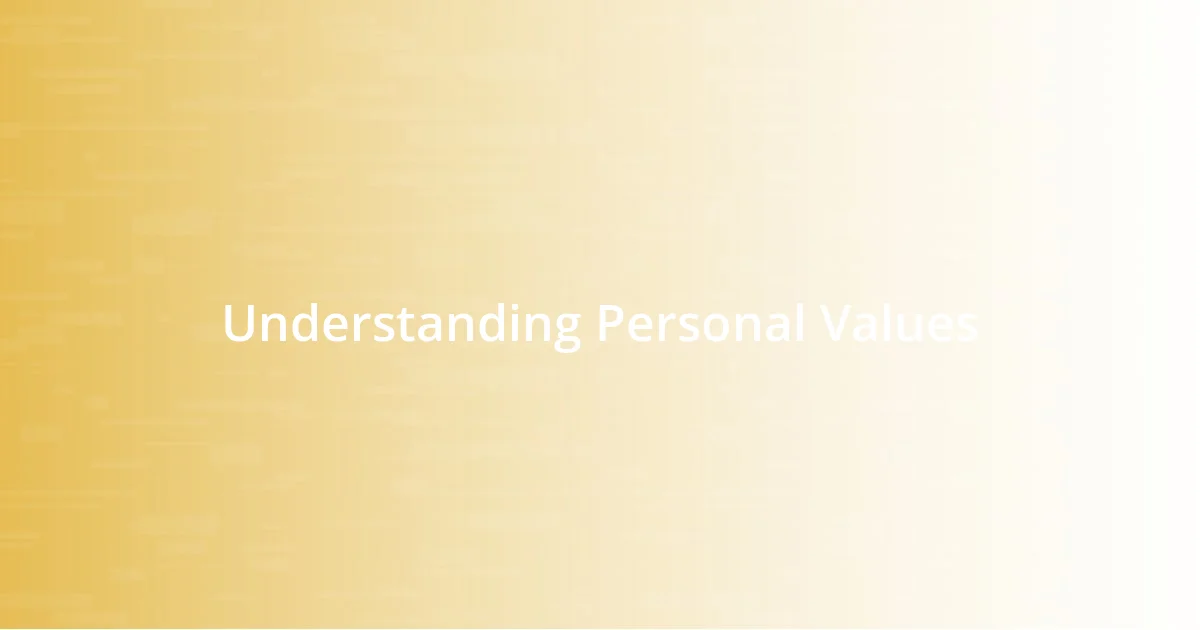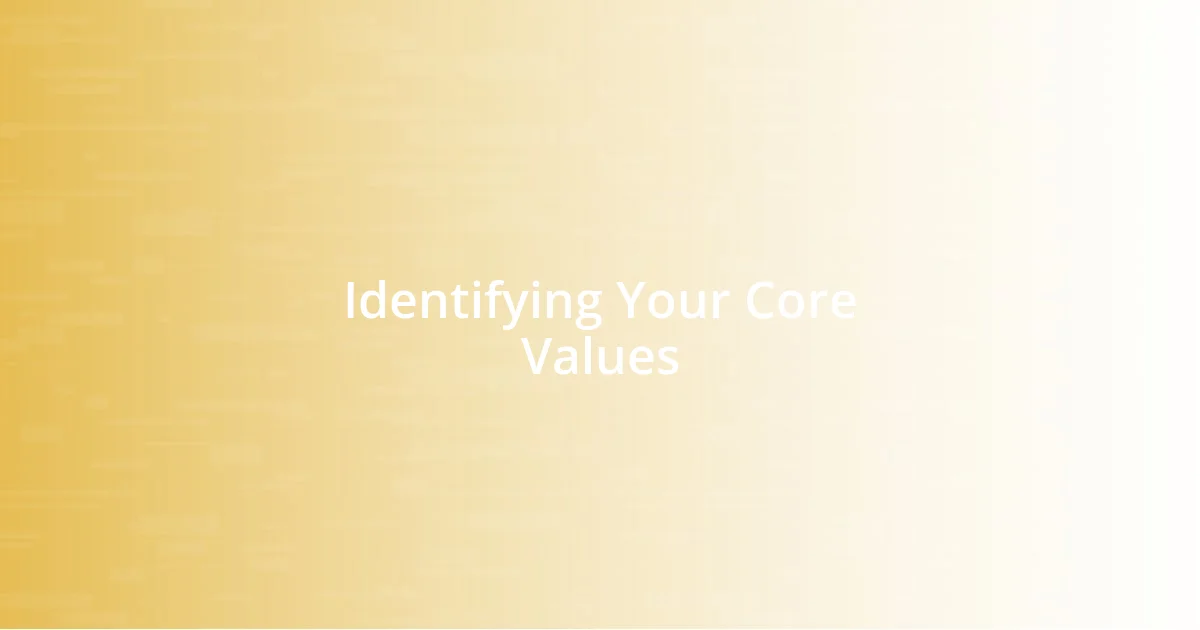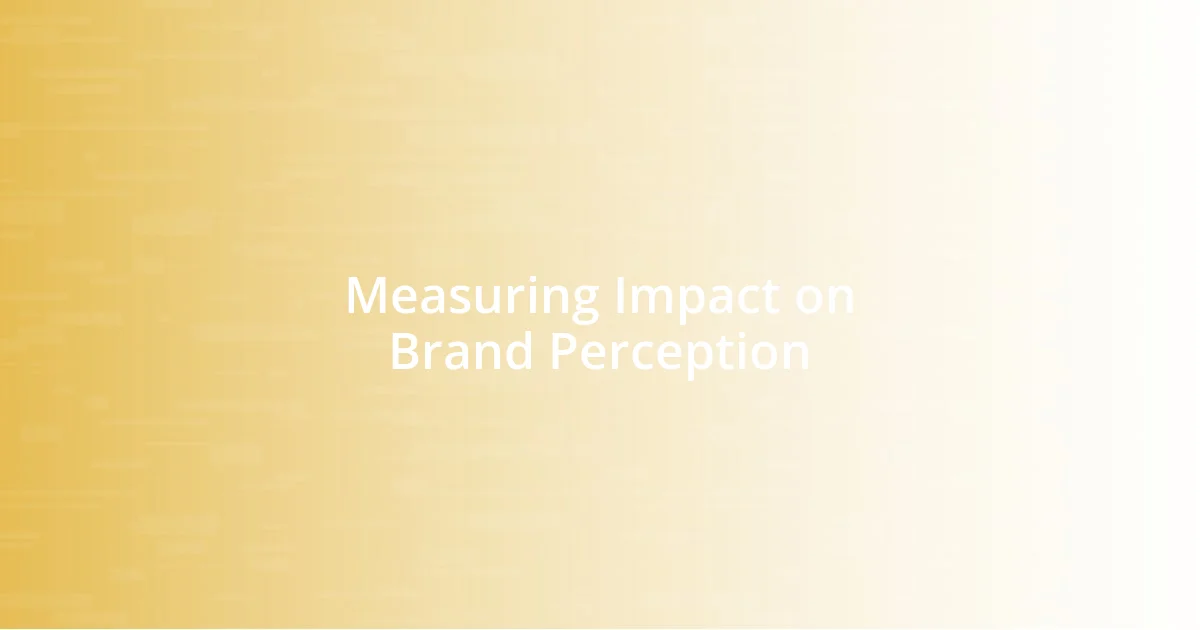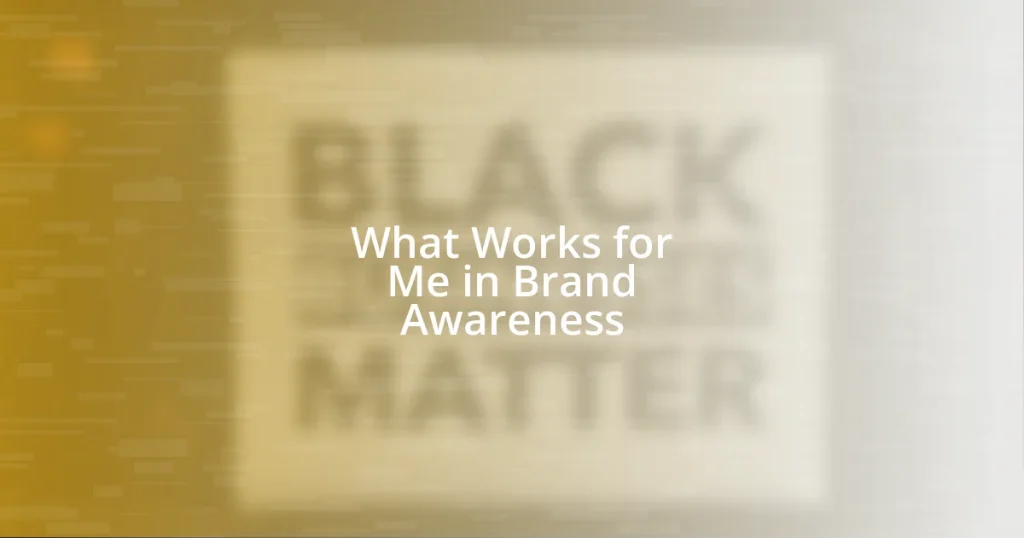Key takeaways:
- Understanding and identifying personal values is crucial for aligning branding with authenticity, guiding decisions, and establishing meaningful connections with audiences.
- Assessing brand alignment with personal values through feedback and reflection helps maintain authenticity and strengthens the brand’s identity.
- Adapting values to market changes while staying true to personal beliefs allows for growth and relevance, enhancing customer engagement and brand perception.

Understanding Personal Values
Understanding personal values is like peering into the soul of who we are. I remember sitting in a coffee shop, reflecting on my core beliefs after a conversation with a friend about what truly matters in life. Suddenly, it struck me how much my values influence my decisions and the direction I want my brand to take.
Values guide our choices, shaping not just our personal lives but also our professional endeavors. For instance, I’ve always valued integrity and transparency, so when I later launched my brand, it became essential for me to build a culture of honesty with my audience. Have you ever considered how your deeply held beliefs guide your own decisions?
When we align our actions with our values, we create a sense of authenticity that resonates with others. I once felt lost in my career until I re-evaluated what I truly stood for. It was a lightbulb moment; understanding my values dramatically shifted my approach to branding, making it a more meaningful journey. Embracing this understanding encourages us to live more authentically, both personally and professionally.

Identifying Your Core Values
Identifying your core values requires introspection and honesty. I remember sitting down one afternoon, pen in hand, determined to articulate what truly mattered to me. It was more than just a list; it was an exploration into my heart. As I brainstormed, I realized that understanding these core values was essential not just for my life but also for constructing a brand that felt authentic.
To streamline this process, consider reflecting on these prompts:
- What principles do I hold most dear?
- Which moments in my life brought me the most fulfillment?
- Are there specific experiences that deeply shaped who I am?
- When have I felt most proud of my actions or decisions?
- What do I want my legacy to be?
By thoughtfully engaging with these questions, I found clarity in my values, paving the way for a brand that mirrors my beliefs and intentions. Connecting these personal truths to your branding journey can foster a profound sense of purpose.

Assessing Brand Alignment
Assessing the alignment between personal values and branding is a crucial step in creating a meaningful connection with your audience. I often ask myself, “Does my brand truly reflect my beliefs?” During the initial stages of my branding journey, I scrutinized my mission statement against my personal values. The more I evaluated, the clearer it became that they needed to echo each other, like harmonizing notes in a song. If they didn’t resonate, how could I expect others to connect with my message?
One practical way to assess alignment is through feedback. I once reached out to a few close friends and colleagues, asking them to describe what they believed my brand stood for. Their insights opened my eyes to discrepancies I hadn’t noticed, highlighting how crucial third-party perspectives can be. Sometimes, others see us in ways we can’t recognize ourselves. I encourage you to seek out those opinions; they can be invaluable in realigning your branding with your personal ethos.
Reflecting on past experiences can also provide clarity. I still remember a campaign I ran that strayed from my commitment to sustainability. It didn’t sit right with me, and the campaign’s lack of authenticity turned out to be a costly lesson. Each misstep has taught me the importance of reassessing brand alignment continuously, ensuring that what I project outwardly remains true to my inner values.
| Criteria | Assessment Example |
|---|---|
| Personal Values | Integrity and Transparency |
| Brand Messaging | Honest communication with clients |
| Feedback Mechanisms | Surveys from audience and peers |
| Reflection Practices | Monthly brand audits |

Creating a Values-Driven Brand Strategy
Creating a values-driven brand strategy starts with a commitment to authenticity. I still reflect on the moment I decided to be transparent about my business practices. Sharing my journey, including both the victories and challenges, not only built trust with my audience but also deepened my own connection to the brand. It felt like I was inviting others into my story, and that made all the difference.
A pivotal strategy I employed was to embed my core values into every aspect of my brand. For instance, when I launched a new product, I ensured that the packaging was eco-friendly, aligning with my belief in sustainability. I remember the sense of pride I felt when customers appreciated this choice. It reaffirmed that my values weren’t just buzzwords; they were the foundation of my brand’s identity.
Have you ever considered how much emotional connection can stem from shared values? When my brand messaging highlighted community involvement through local partnerships, I saw engagement soar. I realized that people love supporting brands that resonate with their own beliefs. This isn’t just about transactions; it’s about creating a tribe of like-minded individuals who feel seen and valued through your brand story.

Communicating Your Values Effectively
When it comes to communicating your values, storytelling plays a vital role. I remember sharing a story about my first encounter with environmental activism; it wasn’t just a moment of inspiration but a turning point for my brand. By weaving my personal experiences into my brand narrative, I created an emotional connection that resonated with my audience. Have you thought about how a good story might showcase your values more vividly?
I found that visual elements also convey values effectively. One time, I redesigned my website to feature photographs that highlighted real moments within my community. Those images portrayed authenticity and commitment, making it clear that my values were more than just words on a page. It struck me how much people appreciate seeing real faces and places; it invites them to feel part of a bigger narrative.
Engagement goes beyond simply stating values; it invites conversation. I’ve often facilitated discussions on social media where followers could share their interpretations and feelings about sustainability. These interactions not only fueled my passion but also fostered a sense of belonging within my brand community. I encourage you to consider how inviting your audience into these dialogues can deepen both understanding and commitment to your shared values.

Measuring Impact on Brand Perception
Measuring the impact of my branding efforts on perception was a journey in itself. I remember the first time I conducted a brand survey; I was both excited and nervous to see the feedback. The results illuminated how aligned my audience felt with the core values of my brand, and it was a rewarding experience to realize that my authenticity resonated with them.
I also leveraged social media analytics to measure engagement levels in relation to brand values. One post that showcased our community involvement received far more interactions than others, reinforcing my belief that people genuinely connect with brands that reflect their values. Have you ever noticed how high engagement on certain topics can guide your branding strategy? It’s almost like having a pulse on what your audience truly cares about.
Furthermore, I sought qualitative feedback through direct conversations with customers. I recall a heartfelt message from a loyal customer who shared how my sustainability efforts influenced their purchasing decisions. It was moments like these that showed me the profound effect of integrating personal values into branding—not just on sales, but on building meaningful relationships. Isn’t that what branding is truly about?

Adjusting Values to Market Changes
As I navigated market changes, I had to keep my core values in check while staying relevant. There was a time when a trend in sustainable fashion emerged, and I felt an urge to pivot my offerings. I remember grappling with this, questioning whether it was just a fad. Ultimately, I embraced the change, aligning my values with the shift while remaining authentic to my mission.
I’ve often witnessed how customer feedback can act as a compass during changing trends. During a particularly slow sales month, I initiated an informal survey, asking customers what sustainability aspects mattered most to them. It was eye-opening to discover that they were not only interested in eco-friendly materials but also in the stories behind the brands. This realization pushed me to adjust how I communicated my values, ensuring I didn’t lose sight of what was important while still addressing market demands.
Moreover, adapting my values to the market doesn’t mean compromising on authenticity. I recall a conversation with a fellow entrepreneur who was hesitant to embrace new marketing strategies for fear of losing their identity. I argued that being adaptable can coexist with core values; it’s about reinforcing those values in fresh ways that resonate with evolving consumer consciousness. Isn’t it empowering to think that our values can grow alongside market trends, creating a richer experience for both the brand and the customer?















